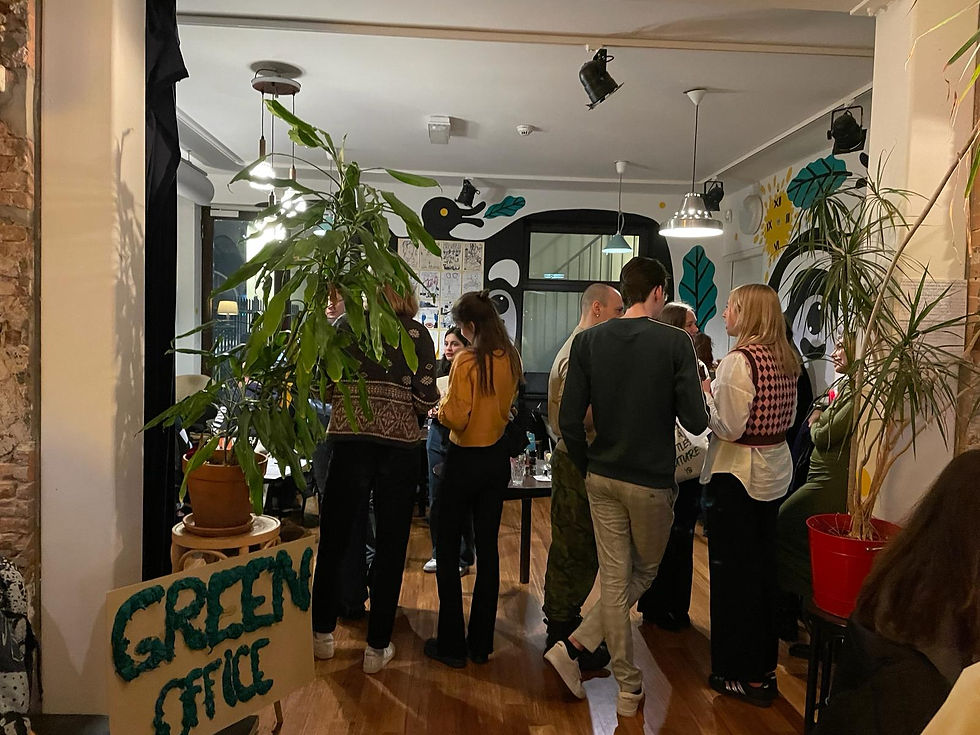Sustaining Fashion
- Green Office

- May 14, 2018
- 3 min read
Fashion is an integral component of human culture and it accounts for $12 billion annually just in the United States alone. The typical European family spends about $1700 a year on clothing. So why exactly the reason for concern? Large fashion retailers found themselves in the crosshairs of public scrutiny after the collapse of a large garment factory in Bangladesh which killed and injured thousands of people. This, coupled with a troubled environmental record, particularly centered around the industry’s dealing with waste water and its use of petrochemicals, certainly gives way to concerns raised over the sustainability aspect of fashion. At the Green Office, we have been running a blog series that focuses on the internal workings of the individuals who work at the green office. Last week we met with Alissa, who is working on trash separation at the UvA. This week, we look into Niklas Illsenseer, who leads the Research & Education portfolio team of volunteers.

When probed about why he thought sustainability in the fashion industry was important, he said, “First of all, we tried to choose a topic that students want to learn and hear about. Our volunteers themselves come up with ideas and we work together bringing them on stage. One of our main goals is to show that sustainability is more than just another separate field to study or work in. It is actually an umbrella concern for all aspects of the global economy.”
Niklas and his team of student volunteers organized a Green Talk event. Green talk is a lecture series focusing on contemporary environmental and sustainability subjects. One of the volunteers working closely with Niklas, Karolin, had the idea to make this derivative of Green Talk about the fashion industry.

When asked why she thought sustainability in the fashion industry is important, she cited her "long term general interest in sustainable fashion.” Karolin runs her own fashion oriented blog so the connection was natural.
Via social media, Karolin learned about the online movement #whomademyclothes which began gaining steam and focused on sustainable brands and bloggers.
Fashion revolution week developed out of the hashtag and Karolin and Niklas spotted the perfect opportunity to host a symposium at the University of Amsterdam. The Green Office Research & Education team invited three speakers on stage to share their stories of sustainability and fashion. #1 Fashion for Good The event’s first speaker, Eva van der Brugge, came from an organization called Fashion for Good. Based in Amsterdam, Fashion for Good aims to highlight sustainability in the fashion industry.
They do so by ‘accelerating positive impact’ which focuses resources on already existing innovation. Centered around the ‘five goods’ which are “Good Materials, Good Economy, Good Energy, Good Water and Good Lives”, fashion for good has situated itself as a nexus for all things sustainable fashion.

#2 Hoodlamb
Part of the challenge for the fashion industry is that the materials used are often produced from plastic. Douglas Mignola, from Hoodlamb, shared with the audience his line of products which are made from hemp. Hemp is a

sustainable solution to materials sourced from plastic since it can be grown quickly and without having to be extracted from fossil fuels.
Douglas outlined how he maintains sustainability in his company’s products, citing his overseeing of the production process. Hemp and organic cotton are spun into hoodies, heavy winter coats, and other clothes in China. By visiting the factories where Hoodlamb’s clothes are produced, Douglas is able to ensure healthy working conditions and can oversee the production of his coats from raw material to final product.
During his presentation he told the audience that when he began Hoodlamb, there were very few other clothing companies which focused on sustainability as part of their business model. He also noted that this is beginning to change, bringing notes of optimism to an otherwise seemingly bleak future for the fashion industry.
#3 Mumster

Chanel Trapman is a self made social media superstar. Boasting almost 16 thousand followers on her Instagram, Chanel is redefining what it means to be an ‘influencer’. Many influencers are subject to fashion brands which do not prioritize sustainability as a part of their brand, Chanel hopes to change that. By only wearing brands which are sustainable, and by highlighting sustainability on her blog, Chanel hopes to inspire a positive and conscious shift in the way we approach fashion.
Fashion revolution week for Chanel is an important event because people are made more aware of the true cost of their fashion. Right after the Green Office event, Chanel was on her way to a screening of the movie “The True Cost” which investigates the working conditions of garment workers.
Some takeaways:
Know where your fashion comes from, do you know if your clothes are produced sustainably?
Consume fewer items, and buy quality items when you do purchase.
Shop at vintage stores, swap clothes with friends, and recycle the fabrics you no longer use.



